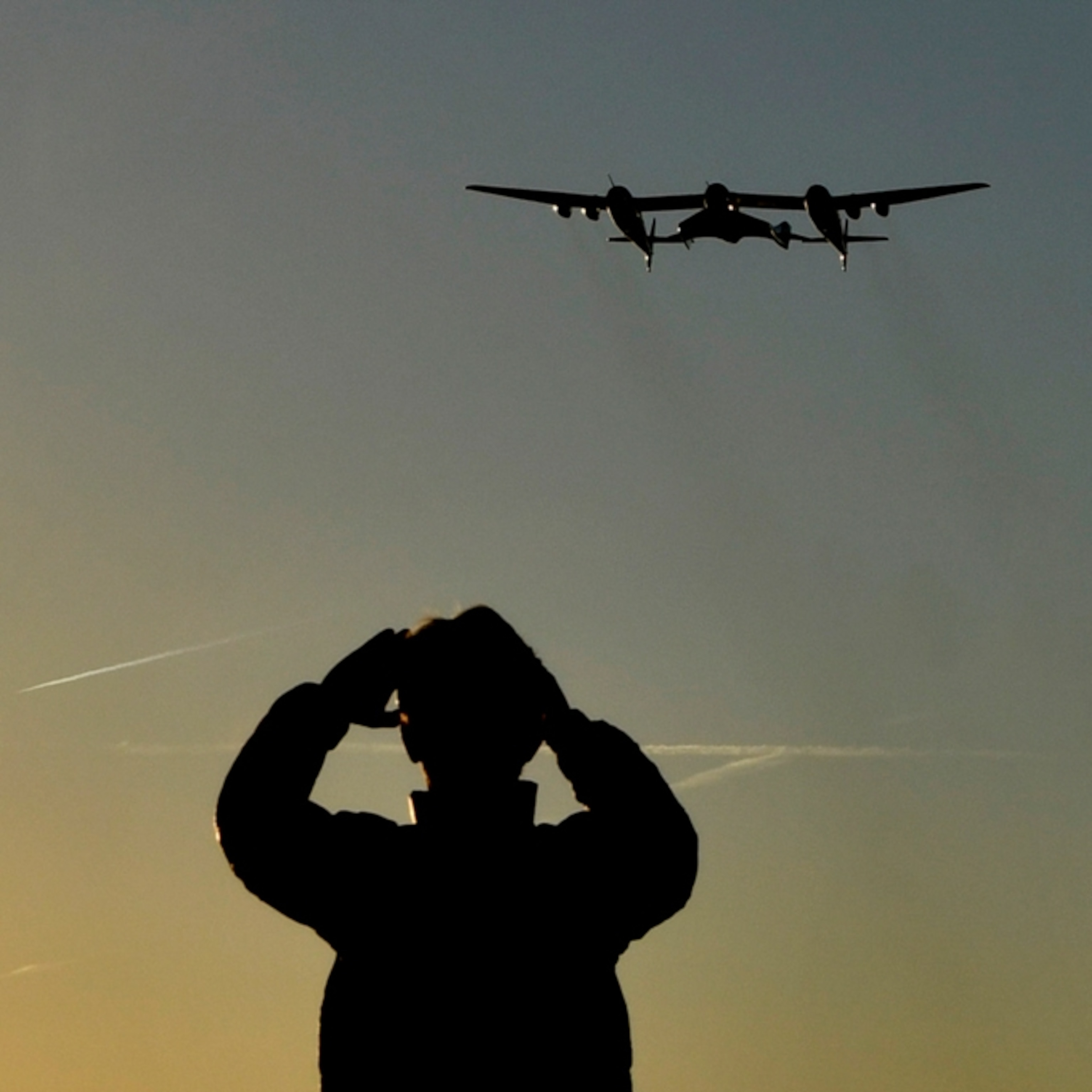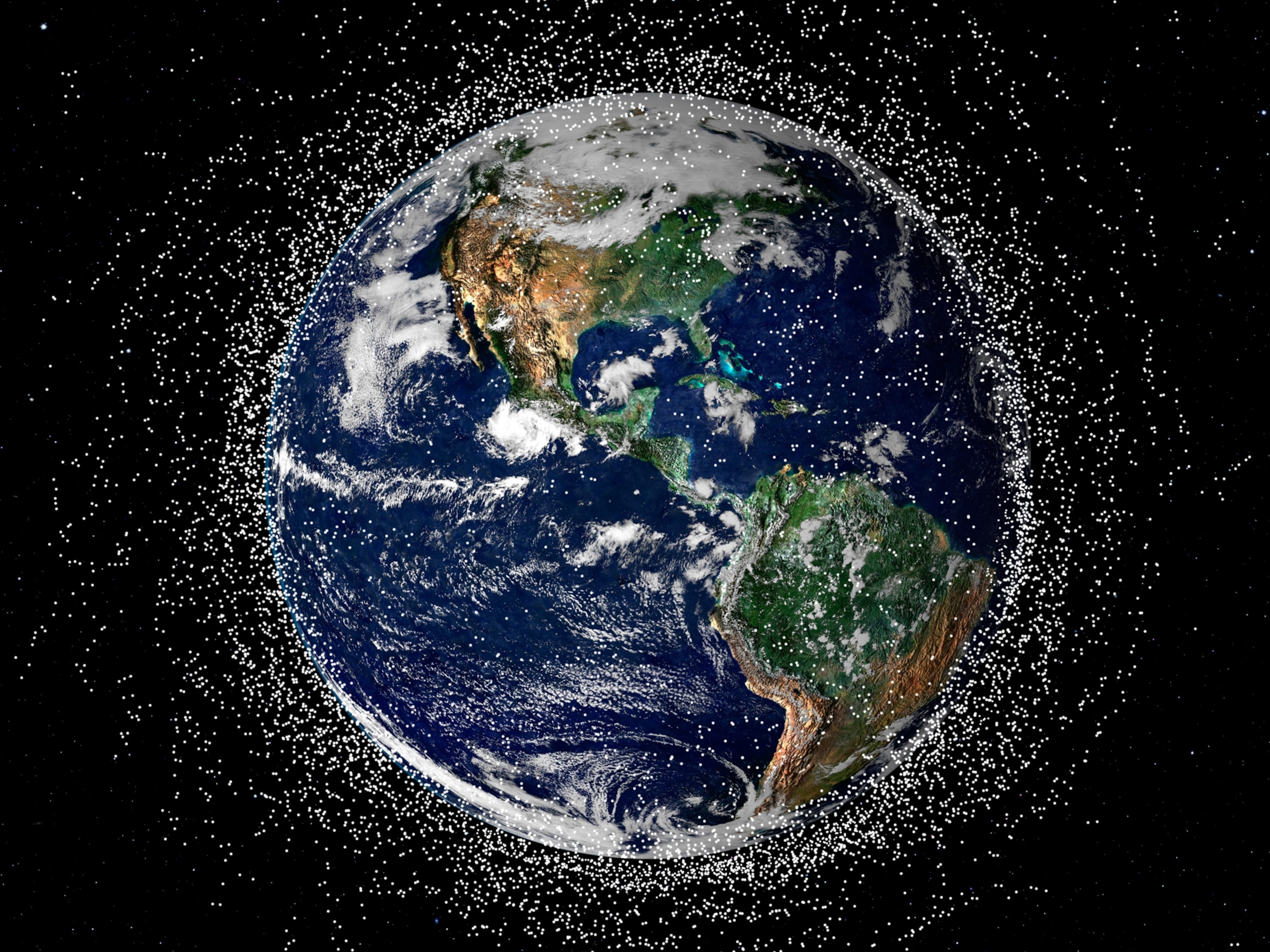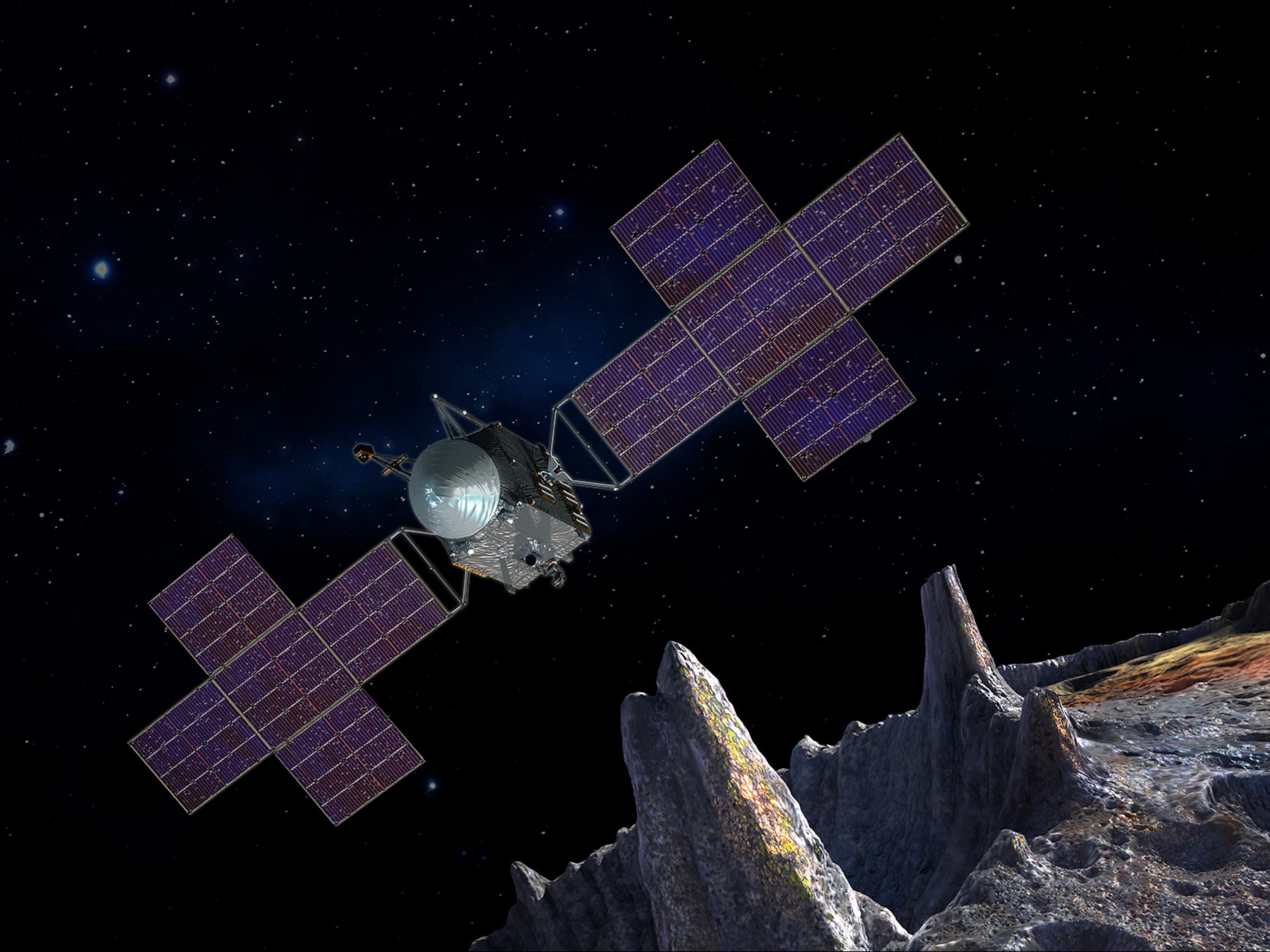
Sian Proctor, first Black woman to pilot a spacecraft, opens up about her journey
The SpaceX astronaut speaks candidly about her life-long pursuit of spaceflight, the joys and challenges of being in orbit, and her hopes for a more equitable future.
Sian Proctor doesn’t give up—it was just a matter of time before she achieved her goal of flying into orbit. Bitten by the spaceflight bug at an early age, the 51-year-old geoscientist, artist, and airplane pilot recently became the first Black woman in history to pilot a spacecraft.
Proctor’s dad had helped guide the Apollo missions in orbit from NASA’s tracking station on Guam—earning a personal thank-you from Neil Armstrong and a house full of NASA memorabilia. Like Armstrong, Proctor wanted to be an astronaut. So she earned a Ph.D. as well as her pilot’s license and SCUBA certification, skills common among astronaut candidates.
In 2009, Proctor made it to the final round of NASA’s competitive astronaut selection process. But when NASA rejected her candidacy, it seemed her dreams of visiting space might not come true. Instead she opted for an analog mission, and in 2013 she spent four months as a crew member in a simulated Mars habitat in Hawaii.
Now Proctor has not only made it to orbit, she has made history. She won her seat on the all-private Inspiration4 mission by impressing a panel of judges with her artistry, her panache, and her efforts to promote what she calls JEDI space—a just, equitable, diverse, and inclusive vision of space exploration for humanity.
“There have been so few of us who’ve even gone to space,” Proctor says of the Black community. “I just think, wow, how do we broaden access and inspire others so that more will follow?”
For three days in September, Proctor and her crewmates orbited Earth in a SpaceX Dragon capsule and helped raise more than $200 million for Memphis-based St. Jude Children’s Research Hospital. Also aboard were mission commander Jared Isaacman, who bankrolled the flight; mission specialist Chris Sembroski, who won his seat in a raffle; and medical officer Hayley Arceneaux, a childhood cancer survivor. They listened to some music, did some science, and marveled at the bright white sun while enduring the stressful, extreme environment of spaceflight.
As this year’s UN World Space Week celebrates women in spaceflight, National Geographic talks with Proctor about her flight, her crewmates, what really happened with the glitchy onboard toilet, and the message she hopes the Inspiration4 mission will send.
(The following interview has been edited for length and clarity.)
What does being weightless actually feel like?
It's amazing. I dream about it a lot. Out of the two weeks I've been back, at least 50 percent of the nights I’ve dreamt about living in space, and it's wonderful because it brings me back to that sensation, where really in my core I just feel lifted up. It's hard to describe, but if you've ever had flying dreams and things like that, it's just this wonderful ability.
Would you make this journey again?
I would go for longer. Three days was not enough. That's the big thing.
Why?
The first day, I wasn't feeling very good. Space sickness is one of those things that a lot of people suffer from. You’re just not on your game. And then the second day you're feeling better, but your head is a little stuffy. But man, I woke up the third day, and I was humming, and everything was perfect. I had adapted, I was good, and I was like, What? I have to come home?! No, no, no! So I think, ideally, a five-day mission in the Dragon capsule with the cupola would be perfect.
But weren’t you scared at all during launch or landing?
No, no I wasn't. As a pilot, I have tasks that I have to do. When we're actually in the deorbit sequence, we monitor the system because there are some things we can do if the flight computer doesn't do what it's supposed to do. One of the big ones is your drogue parachute deployment and your main parachutes—if they don't fire and deploy the way they're supposed to, we can actually go in and manually do it.
It was the most beautiful thing when I saw four healthy parachutes deploy because now you know, Oh yes! We’re not going to die by smacking the ocean too hard.
What about launch pad nerves?
It was one of those things we’d simulated a lot. Everybody was really chill. We were just sitting there—and you’re counting down, literally, and you get down to the last minute you're like, Well, I guess we're doing this. Let's go! And then the engines kick on and it's the best ride of your life.
The cupola—basically a giant domed window—was a new addition for this flight. What was it like to be in there looking back at Earth?
Hands down, it was the best feature of our spaceflight. None of us realized that because of the design of the cupola we would be able to see the entire sphere of our planet. And it was breathtaking. It's so hard to describe. You just gasped out loud.
I just wanted to reach my hand up and swirl our planet. I kept thinking how humans are designing this portrait in motion. We have a big impact on how it's going to look, and what we do matters. Earth is absolutely stunningly beautiful. It’s so bright! And then the moon! The moon was hanging in suspension.
Some of the NASA astronauts who flew in the Dragon capsule have said that it's pretty cramped, even for two people. What was it like for you, with three other people for three days? Did it feel crowded?
No. And that's the interesting thing, because it really wasn't a huge amount of space. The cupola added space, which was nice, but I think part of it is that we didn't know any better! We didn't have the space shuttle to compare it to or anything else. And then when we look back at the Apollo and Gemini capsules, we’re like, they lived in that? This Dragon is like the Cadillac of space stations. It’s roomy! I think it's all about perspective, right?
OK, so what happened with the toilet? The news was full of headlines about it setting off an alert.
We had a waste fan issue. I think it was made into an event that was bigger than it actually was. We got the alert, we figured it out, and we came up with a solution where we could continue to stay on orbit with our mission. It’s humans figuring out how to live and work in space.
Waste management in space seems pretty crucial … NASA actually just designed a new toilet for the International Space Station, which is much easier for women to use.
That’s a big thing. Thank you, NASA! One of the things I noticed is that space is built—a lot of times—around men. We've got to think broader. And this is one of the areas where I have to hand it to SpaceX, because they custom-built each of our spacesuits for us. So it wasn't, What can you fit me into? It was, Here, we're going to custom make this specifically for you. I love my spacesuit.
Did you get to keep it?
No. If I had it, I would donate it to the African American History Museum, so it would go on to inspire generations. I just think of what an impact that would make. But you know, SpaceX has a re-usability model, and that's an important part of lowering costs. So those spacesuits actually get reused as training suits for future crews.
One of the things I loved about your message is your connection with art.
I feel really fortunate, you know, I'm a trained geoscientist. But when I applied to go to space on Inspiration4, I said, Look, you need to send an artist and a poet. Because it’s such an important part of humanity going out into space. The human part of us is the art, the music, the dancing, the expression, the culture that we bring along with us. It's not just about the science, the technology, the engineering, and the math that gets us there.
Right. And as we're thinking about even longer duration missions in space, that human component becomes so much more important.
That's one of the reasons why I say that we're writing the narrative of human spaceflight right now. Jared came with a vision of how we could, to some extent, set a standard of thinking about human spaceflight. That you can go and explore among the stars, but you can also do good here on Earth in the process. And that's why we have to strive for a JEDI space—a just, equitable, diverse, and inclusive space. This is something that we completely have in our control to do. So it's about being mindful to do that.
Is there anything that you wish you had known before you embarked on this journey?
I learned through this process to be more forgiving of myself. I was worried that I wouldn't be good enough or smart enough, or somehow I would mess up, and this opportunity would be taken away from me. And it wasn't! Becoming the mission pilot was all about becoming a systems engineer, and I was not an engineer. I'm a pilot, but a Cessna 172 is not the same as a Dragon capsule. I like to say I went to SpaceX school, which is similar to going to Hogwarts, where there’s magic and mystery and all this stuff. And I'm here being like, wait, I'm not a wizard!
And it turns out you actually are a wizard.
I am! I know! I love it!
Are you a Gryffindor?
I am a Gryffindor, and it's funny because Harry Potter was such a running theme of our crew. Jared was the only one who hadn’t seen it, so we made him take the Pottermore house test. Two of us were in one house and two were in the same other house. Any guesses?
There's another Gryffindor. Hmm. Is the other house Ravenclaw?
It wasn’t. You might have thought Jared would be a Ravenclaw. So, where would Hayley be?
I think Hayley could be a Gryffindor? She’s brave.
No.
Hufflepuff?
Yes! Hayley is a total Hufflepuff, through and through.
OK, so Hayley and Chris are Hufflepuff.
Yes. And Jared and I are Gryffindor. Now I'm going to look at Harry riding a dragon in a completely different way. Like, I got my dragon wings!
Did anything else about this experience, or the way that you responded to it, surprise you?
I think the big thing was being in my 50s and achieving this. The messaging that has come out of this experience for me, and for older women is: Don't give up on a dream. A lot of times you think that after you raise your kids, or that when you're in your 40s, 50s or 60s, that the best part of your life has already passed you by, and that some of the things you had dreams of doing when you were a kid, you think you're too old to pursue them or that you can't achieve them now.
But that's not the case.
So I just want to be a spokeswoman, not only for women and girls of color, but for women in general. We live longer than men. It's so important that we understand that our golden years can be some of our best years. Because we’re so much wiser, right? You're in your 50s, and you're like, Look, I'm unapologetic. The phoenix has risen. I am who I am, and I'm so much wiser than I was when I was in my 20s and 30s.
Related Topics
You May Also Like
Go Further
Animals
- This ‘saber-toothed’ salmon wasn’t quite what we thoughtThis ‘saber-toothed’ salmon wasn’t quite what we thought
- Why this rhino-zebra friendship makes perfect senseWhy this rhino-zebra friendship makes perfect sense
- When did bioluminescence evolve? It’s older than we thought.When did bioluminescence evolve? It’s older than we thought.
- Soy, skim … spider. Are any of these technically milk?Soy, skim … spider. Are any of these technically milk?
- This pristine piece of the Amazon shows nature’s resilienceThis pristine piece of the Amazon shows nature’s resilience
Environment
- This pristine piece of the Amazon shows nature’s resilienceThis pristine piece of the Amazon shows nature’s resilience
- Listen to 30 years of climate change transformed into haunting musicListen to 30 years of climate change transformed into haunting music
- This ancient society tried to stop El Niño—with child sacrificeThis ancient society tried to stop El Niño—with child sacrifice
- U.S. plans to clean its drinking water. What does that mean?U.S. plans to clean its drinking water. What does that mean?
History & Culture
- Meet the original members of the tortured poets departmentMeet the original members of the tortured poets department
- Séances at the White House? Why these first ladies turned to the occultSéances at the White House? Why these first ladies turned to the occult
- Gambling is everywhere now. When is that a problem?Gambling is everywhere now. When is that a problem?
- Beauty is pain—at least it was in 17th-century SpainBeauty is pain—at least it was in 17th-century Spain
- The real spies who inspired ‘The Ministry of Ungentlemanly Warfare’The real spies who inspired ‘The Ministry of Ungentlemanly Warfare’
Science
- Here's how astronomers found one of the rarest phenomenons in spaceHere's how astronomers found one of the rarest phenomenons in space
- Not an extrovert or introvert? There’s a word for that.Not an extrovert or introvert? There’s a word for that.
- NASA has a plan to clean up space junk—but is going green enough?NASA has a plan to clean up space junk—but is going green enough?
- Soy, skim … spider. Are any of these technically milk?Soy, skim … spider. Are any of these technically milk?
Travel
- What it's like to hike the Camino del Mayab in MexicoWhat it's like to hike the Camino del Mayab in Mexico
- Is this small English town Yorkshire's culinary capital?Is this small English town Yorkshire's culinary capital?
- This chef is taking Indian cuisine in a bold new directionThis chef is taking Indian cuisine in a bold new direction







